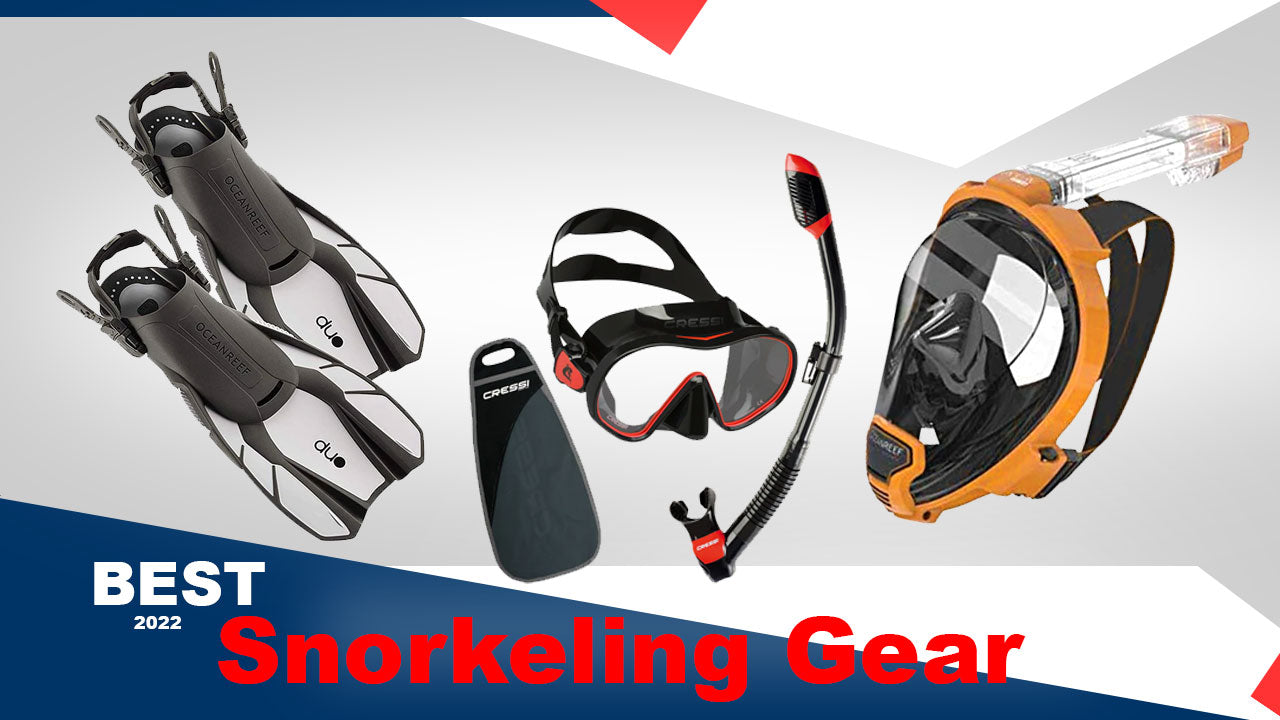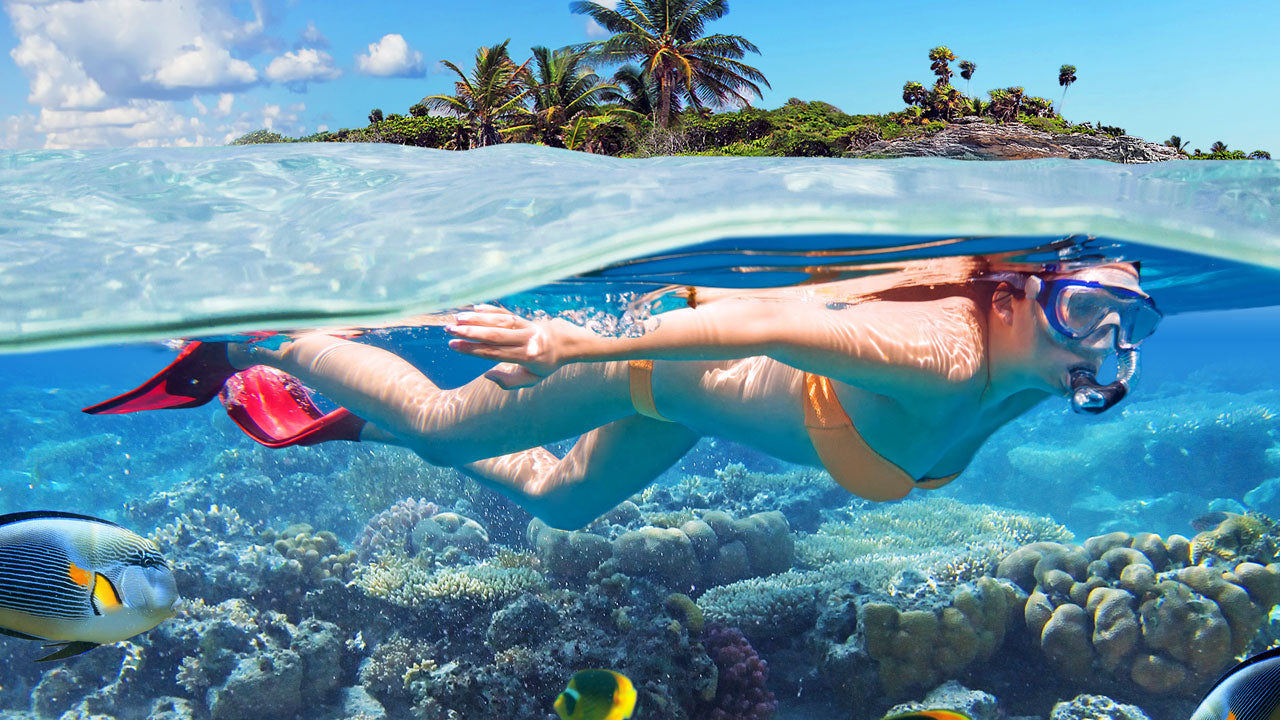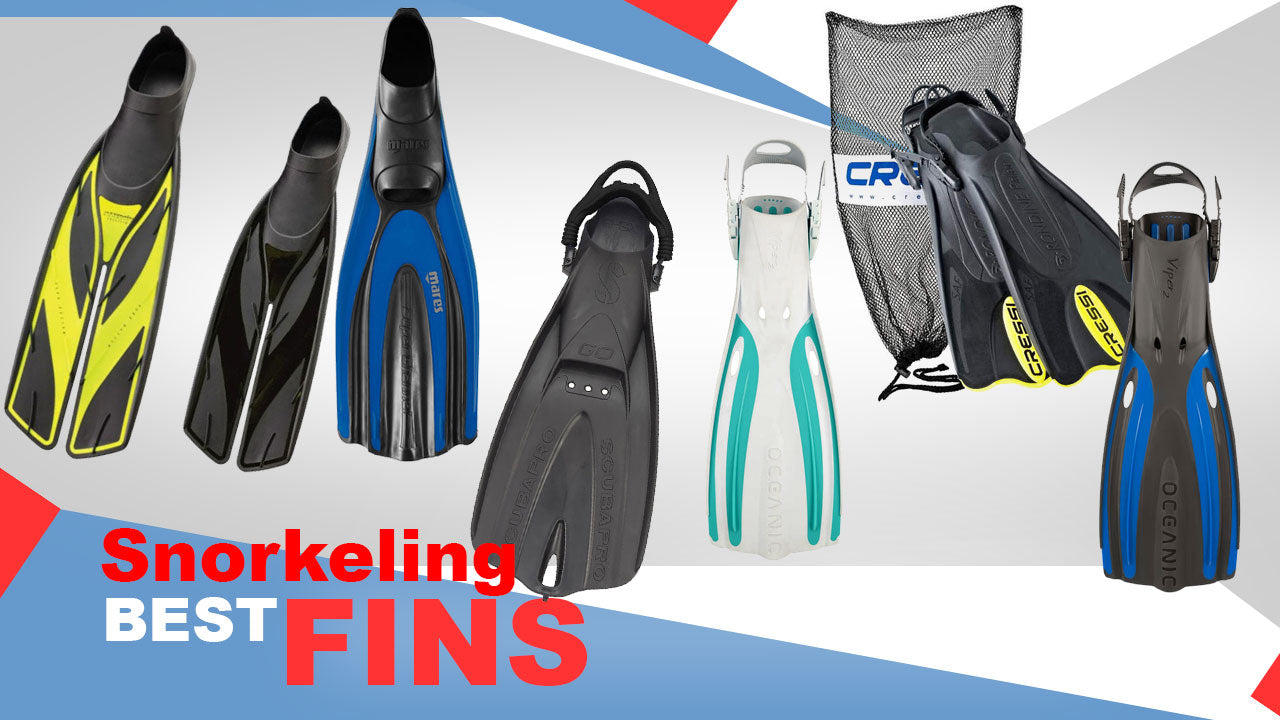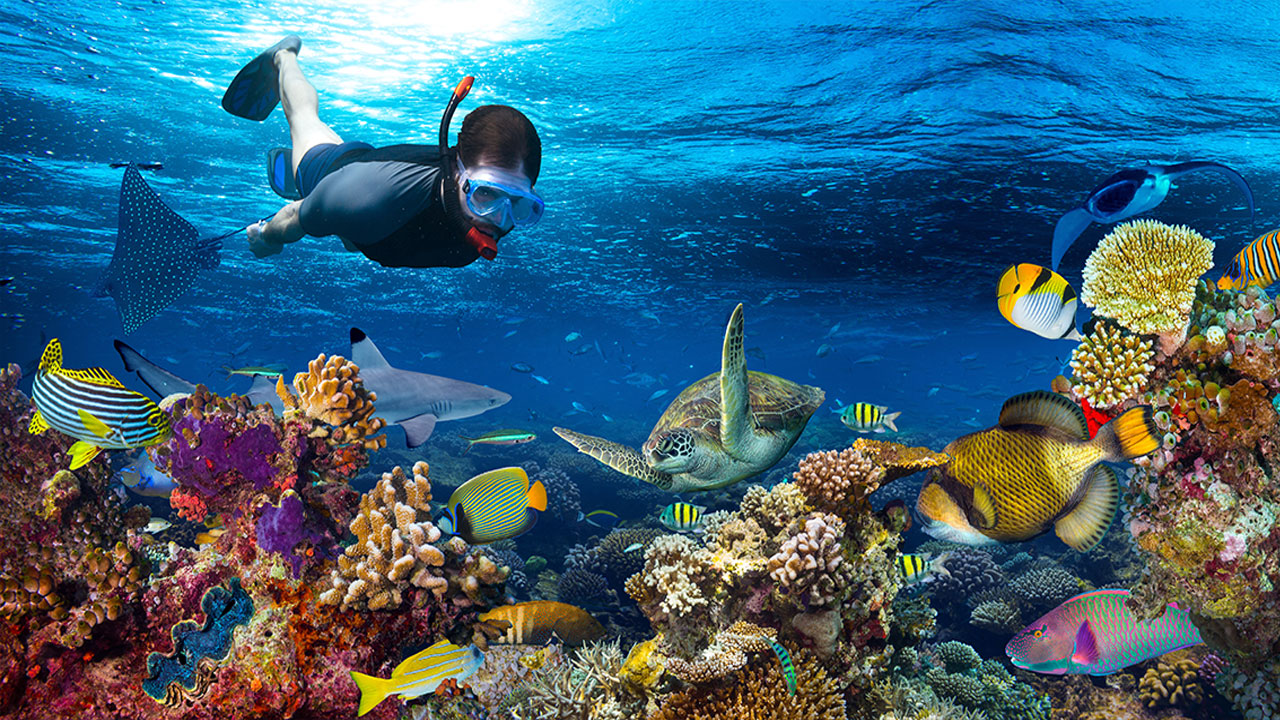7 Best Snorkeling Fins in 2024

Snorkeling is one of the most popular ways to explore the underwater world. Because it requires very little equipment and training, pretty much everyone can enjoy the activity. That being said, the gear you do use on your snorkeling adventures can make a huge difference in the kind of experience you have. A good pair of fins is among the must-haves for a successful snorkeling trip. They will allow you to move faster in the water, at the same time preventing foot fatigue and over-exhaustion. The right set of snorkeling fins will also offer better control, more comfort, and higher maneuverability as you move around reefs and sea life.
Nowadays, there is a huge range of snorkeling fins on the market. Although the choice may feel a bit overwhelming at first, the good news is that there are definitely some fins out there that will fit your needs and preferences. To help you on your quest to find the perfect pair of fins, we have reviewed the top fins on the market by category and compiled a list of pointers with features to look for when you’re shopping around.
Best Fins for Snorkeling - Short Comparison
- Best Overall - Mares Avanti Superchannel Full Foot Fins
- Best for Travel - ScubaPRO Go Fin
- Best Short Fins - Ocean Re
ef DUO II Fins - Best for Comfort - Atomic Aquatics Full Foot Split Fins
- Best Advanced Multi-Use Fins - Oceanic Viper 2 Open Heel Fins
- Best Budget Fins - Cressi Palau Short Fins
- BONUS: Best for Kids - Cressi Rocks Kids Fins
| Table header 0 | Foot Pocket Type | Blade Type | Blade Stiffness | Blade Length | Weight (1 fin) |
|---|---|---|---|---|---|
| Mares Avanti Superchannel | Full Foot | Multi-channel, not vented | Medium | 32-37 cm / 12.5-14.5 in | 0.7 kg / 1.5 lb |
| ScubaPro Go | Open Heel | Not vented | Medium-High | 26-30.5 cm / 10-12 in | 0.6 kg / 1.3 lb |
| Ocean Reef DUO II | Open Heel | Short, vented | Medium-Soft | 12.5 cm / 5 in | 0.3 kg / 0.7 lb |
| Atomic Aquatics Split | Full Foot | Split | Medium-High | 33 cm / 13 in | 0.9 kg / 2 lb |
| Oceanic Viper 2 | Open Heel | Vented | Medium | 38 cm / 15 in | 0.7 kg / 1.5 lb |
| Cressi Palau Short | Open Heel | Short, not vented | Medium-High | 11.5 cm / 4.5 in | 0.5 kg / 1.1lb |
Need to Know What to Look for in Good Snorkeling Fins?
Full foot or open heel? Paddle or split blade? Vented or not vented? If you are new to snorkeling and find yourself asking these questions, check out our buying guide at the bottom of the article.
Need a Mask and Snorkel to Complete Your Set?
Best Snorkeling Gear in 2024
Check out this article with our picks of best gear and accessories for snorkelers.
Read MoreSnorkeling Fins Buying Advice
As you can see from our selection above, snorkeling fins come in a range of shapes and sizes, and if you are still struggling to decide which ones are right for you, here are the major factors to consider before investing in a pair.
Foot Pocket Design
Full Foot. With this style of fins, the foot pocket wraps almost completely around your foot and covers your entire heel. They are designed to be used without any footwear, creating a pleasant ‘au natural’ feel. Although if you prefer so, you can wear thin neoprene or lycra socks to help prevent rub spots.
Because the full foot fins are so firmly secured against your feet, they are very responsive to your movements and finning power. They re also typically more lightweight and hydrodynamic than their open-heel counterparts and thus provide a more streamlined in-water experience.
All in all, full foot fins are a good choice for warm water snorkelers who aren’t keen on wearing lots of gear and like a speedy kit-up.
Open-Heel. Open in the back of the foot, this style of fins features a strap that goes over the heel. They generally have much larger foot pockets, designed to accommodate neoprene boots. While this makes them bulkier and heavier, which is not great for luggage, and can increase fatigue in the water, open-heel fins have a number of advantages.
One of the big reasons to choose this type of fin is for water entrances that are rocky or full of urchins. You can walk out in your boots and then just put your fins on over them once you can float. The boots (and therefore, open heel fins) are also a must if you plan to snorkel in colder water.
Another benefit of the open-heel fins is that they are more forgiving in terms of sizing. The adjustable strap makes them versatile enough to fit a few consecutive shoe sizes, which is great if you plan to share your fins. It is also a perfect choice for youngsters with growing feet.
Barefoot Open-Heel. This style of fins combines the attributes of the previous two in that it features a strap on the back that goes over your heel, but the foot pocket is more like in the fool foot fins - softer, smaller, and more comfortable.
As the name suggests, these fins are designed to be worn with bare feet or thin socks, so they won’t be the best option for cold water snorkeling or rocky entrances. They are, however, a good alternative to the two classic fin styles if you are looking for an option that’s streamlined in the water, compact, and easy to travel with but also offers some size adjustability.
Blade Length
In order to talk about optimal fin length, let’s first define what is considered short or long, when it comes to fins. So, generally, the really short travel fins are close in size to swim training fins and measure at 15-20 inches (38-50 cm) together with the foot pocket, where the blade is usually less than half (sometimes even a third) of the overall length. The next length range, still considered pretty compact, would be 20-25 inches (50-64 cm) and the blade here would be roughly half the size of the fin. When we talk about longer fins, we usually mean a range between 25-30 inches (64-76 cm). Here, the blade can reach anywhere from 12.5 to 20 inches. Just to compare, the blade length in standard freediving fins (which are considered really long) is 31-38 inches (79-97 cm).
So, which blade length is best for snorkelers?
Since snorkeling is usually done in calm waters and without heavy gear that’d necessitate extra propulsion, many snorkelers choose short fins. They require less muscle power to kick and allow you to stay in the water for longer without tiring your legs. They are also easy to manuever with, ensuring you won’t disturb the sea life or other snorkelers in a crowded site. Last but not least, compact size and light weight make them convenient for travel. All of this usually comprises a perfect option for beginner and casual snorkelers.
That being said, you need to keep in mind that short fins generally provide considerably less power than fins with longer blades. So, if you plan on doing some shallow freediving, snorkeling in mild currents, covering larger distances or simply want to move throught the water with more speed, you should consider getting yourself longer fins. You will also find that they allow you to use slower, longer strokes as opposed to the smaller-range, more frequent kicks optimal with the shorter fins. So, your preferred kicking style will be another factor to consider when choosing the fins most suitable for you.
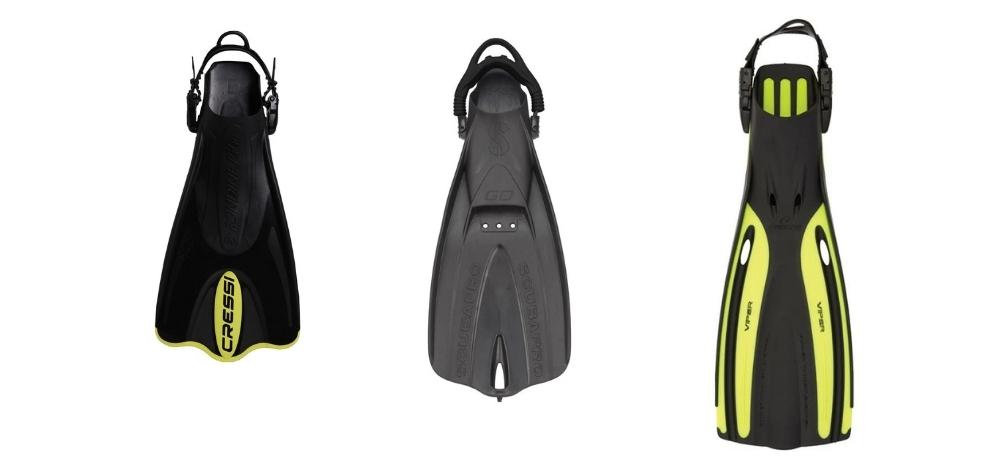
(Cressi Palau Short, ScubaPro Go, and Oceanic Viper 2 fins blade length comparison)
Blade Stiffness
Blade stiffness is another factor that determines how powerful and comfortable the fins will be. As a rule of thumb, the more rigid the fin, the more power it will provide, yet the more difficult it will be to kick. For this reason, the best propulsion comes from matching your physical strength and size with the correct fin stiffness.
If you are more experienced or feel that you have strong leg muscles, you can choose a slightly more rigid pair of fins. There are some great all-around options (such as our top choices in Best Advanced Multi-Use or Best Overall categories) that will provide enough propulsion to be used for snorkeling, scuba, and casual freediving. While these fins will require more energy to move through the water, your strong legs won’t even notice it, and the more flexible fins might seem too flimsy for you.
If you do not have particularly strong leg muscles or simply don’t need that much propulsion, go for something flexible and easy to kick. This will help minimize fatigue and maximize the duration of the swim. Fins with softer blades will be less powerful and fast, but you will enjoy the experience without overtiring yourself.
Blade Style
When it comes to blade style, the two major categories are paddle fins and split fins.
Paddle Fins have a traditional single-blade design. They can be vented and not vented. Vented paddle fins feature slits (they can differ in size and quantity) in their blades. This helps water pass through the dead zones in order to reduce the effort required while finning. Vented fins are generally more efficient but less powerful. Non vented fins are generally more powerful but require more energy to use and for this reason can make you more tired in the water.
That being said, manufacturers also use other methods and technologies, such as channels, side rails, different blade shapes (curved, angled, rounded), etc. to provide that perfect balance of power and effort.
Split Fins essentially feature dual blades with, well, a split in the middle. The two blades act as a propeller, allowing water to flow over the top of the fin and through the split, increasing thrust and reducing drag. These fins work best with short, more frequent kicks, and can help those with a weaker leg muscles achieve competitive speeds. Split fins are also a popular choice among snorkelers prone to muscle cramps in their lower legs.
Fit and Comfort
When it comes to choosing the best snorkeling fins, comfort is key.
You will want to make sure your fin is a proper size. To avoid chafing, it’s important that your fins fit snugly but not so tight that you risk foot cramps. If your fins scrape or rub against your ankles, they are too big or generally a poor fit. If your feet feel pinched or start to tingle when you wear your fins, they are likely too small.
Follow the manufacturer’s guidelines to determine your size. In case you are in between sizes, consider wearing neoprene socks. They will provide just enough extra volume to your foot to create a perfect fit.
Another important factor to take into account is the material of your fins - particularly the foot pocket and the strap (for open-heel models). Soft rubber and silicone are less likely to leave chafing or blisters after a prolonged swim.

